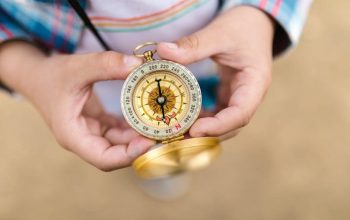Coyote Mentoring⁚ A Philosophy for Nature Connection
Coyotes Guide to Connecting with Nature champions a unique mentoring approach, fostering deep nature connection in children and adults. It emphasizes experiential learning, blending ancient wisdom with modern techniques to cultivate a sense of belonging and place within the natural world.
Understanding the Coyote Mentorship Approach
The “Coyote Mentoring” approach, detailed in Coyotes Guide to Connecting with Nature, is a transformative method for fostering deep connections with the natural world. It moves beyond simple nature walks, employing a holistic pedagogy that integrates observation, storytelling, and hands-on activities. This approach is not merely about imparting knowledge, but about cultivating a profound sense of belonging and understanding within the ecosystem. The mentor acts as a guide, facilitator, and co-learner, adapting their approach to each individual’s unique needs and learning styles. This individualized approach considers the student’s knowledge base, personality, comfort levels, and even their family background to create a truly tailored learning experience. The goal is to inspire curiosity, self-sufficiency, and a lifelong appreciation for nature’s interconnectedness, encouraging exploration and fostering a deep, personal connection with the natural world. It’s about fostering a deep understanding that goes beyond simple facts and figures, touching on the emotional and spiritual aspects of the connection with nature.
The Core Principles of Coyote Mentoring
At the heart of Coyote Mentoring lies a commitment to experiential learning, emphasizing direct interaction with nature. Key principles include fostering a deep sense of observation and awareness, encouraging students to develop keen sensory skills to fully engage with their surroundings. Storytelling plays a crucial role, weaving narratives that connect personal experiences with ecological knowledge, fostering a sense of wonder and respect. The approach also prioritizes the development of practical skills, such as tracking and nature journaling, providing tangible ways to connect with the natural world. Mentors utilize questioning techniques, prompting reflection and deeper understanding rather than simply imparting information. This method encourages self-discovery and personal growth, empowering students to become active participants in their learning journey, fostering independence and confidence in their interactions with nature. The overall aim is to instill a sense of responsibility and stewardship towards the environment, cultivating a lifelong appreciation for the natural world.
Benefits of Coyote Mentoring for Children and Adults
Coyote Mentoring offers profound benefits for participants of all ages. For children, it cultivates a deep appreciation for the natural world, fostering a sense of wonder and curiosity. Improved observation skills, sharpened senses, and enhanced problem-solving abilities are significant outcomes. The program builds confidence and resilience through hands-on experiences and challenges, encouraging self-reliance and independence. Socially, it strengthens bonds through shared experiences and collaborative learning, fostering teamwork and communication skills. Adults participating in Coyote Mentoring experience reduced stress and improved mental well-being through immersion in nature. The program reignites a sense of childlike wonder and fosters a deeper connection with their own inner selves. It cultivates a sense of belonging and place within the larger ecosystem, promoting environmental stewardship and responsibility. For both children and adults, Coyote Mentoring offers a powerful pathway toward personal growth, enhanced well-being, and a strengthened connection to the natural world, promoting a healthier and more fulfilling life.
Practical Activities for Nature Connection
Coyotes Guide details numerous engaging activities for all ages, including tracking, nature journaling, and the “Sit Spot” for mindful observation, fostering direct interaction with nature’s wonders.
The Sit Spot⁚ Cultivating Stillness and Observation
The “Sit Spot,” a cornerstone of Coyotes Guide to Connecting with Nature, encourages deep immersion in the natural world through sustained, silent observation. This practice, described in detail within the book’s pages, cultivates a profound sense of presence and connection. By choosing a specific location in nature and returning repeatedly, individuals develop an intimate familiarity with their surroundings, fostering heightened awareness of subtle changes and the intricate web of life unfolding around them. The Sit Spot isn’t just about passive observation; it’s about actively engaging all senses—listening to the soundscape, noticing shifts in light and shadow, feeling the textures of the earth beneath you, and breathing in the fragrances carried on the breeze. This mindful engagement encourages a deeper understanding and appreciation for the natural world, building a foundation for lasting connection.
Through consistent practice, the Sit Spot transforms from a simple activity into a powerful tool for self-discovery and connection with nature. It provides a refuge from the distractions of modern life, allowing individuals to reconnect with their inner selves and find solace in the quiet rhythms of the natural world. The book emphasizes the importance of patience and persistence in this practice, highlighting how consistent engagement yields deeper insights and a more profound appreciation for the beauty and complexity of nature’s tapestry.
Tracking and Following Animal Trails
Tracking, a key element in Coyotes Guide to Connecting with Nature, transcends mere observation; it’s a journey into the lives of animals. By learning to interpret animal signs—tracks, scat, and other subtle indicators—participants gain intimate insights into their behaviors, movements, and the intricate relationships within their ecosystems. The guide emphasizes careful observation, encouraging participants to slow down, become acutely aware of their surroundings, and develop the patience needed to decipher the stories etched into the landscape. This practice isn’t about passively following trails; it’s about actively engaging with the environment, using all senses to piece together the narrative of the animal’s passage.
Tracking fosters a deeper understanding and respect for wildlife. It allows participants to appreciate the animals not as isolated entities but as interconnected parts of a larger ecological web. By following their trails, one comes to understand their strategies for survival, their interactions with their environment, and their place within the delicate balance of nature. The book emphasizes the importance of ethical considerations, particularly minimizing disturbance to the animals and their habitats. This mindful approach promotes responsible observation and appreciation of the natural world, transforming the tracking experience into a journey of discovery and respect.
Nature Journaling and Storytelling
Nature journaling, as presented in Coyotes Guide to Connecting with Nature, is more than simply recording observations; it’s a powerful tool for deepening one’s connection with the natural world. It encourages participants to engage with their surroundings on a sensory level, prompting them to record not only what they see but also what they hear, smell, taste, and feel. This multi-sensory approach fosters a more profound understanding and appreciation of the environment. Journaling can take many forms, from detailed sketches and paintings to written descriptions and even poetic reflections. The emphasis is on personal expression, allowing individuals to connect with nature in ways that resonate deeply with them.
Storytelling plays a crucial role in the Coyote Mentoring approach. Sharing personal anecdotes, traditional tales, and myths related to nature helps foster a sense of community and shared experience. These stories can be used to transmit knowledge about ecological principles, traditional practices, and the cultural significance of specific places. The guide suggests incorporating storytelling into tracking activities and other nature-based learning experiences, transforming them into engaging and memorable events. By weaving together personal experiences, traditional lore, and scientific information, storytelling bridges the gap between personal connection and ecological understanding, ultimately enriching the overall experience of engaging with nature.
Deepening Your Connection with Nature
Coyotes Guide emphasizes experiential learning, encouraging sensory awareness and understanding of local ecosystems to foster a profound sense of place and belonging within the natural world.
Developing Sensory Awareness in Nature
The Coyotes Guide to Connecting with Nature highlights the importance of engaging all five senses to deepen one’s connection with the natural world. It encourages moving beyond passive observation to actively experience nature through mindful activities. This involves savoring the taste of wild berries, feeling the texture of bark, listening intently to the sounds of the forest, and appreciating the varied scents carried on the breeze. The guide suggests specific exercises to heighten sensory perception, such as blindfolded nature walks focusing on sound and touch, or creating sensory journals detailing observations. By cultivating this heightened awareness, individuals develop a more intimate and nuanced understanding of their surroundings, fostering a deeper appreciation for the intricate details of the natural world and strengthening their bond with it. The emphasis is on slow, deliberate engagement, encouraging a mindful approach that allows for genuine connection rather than hurried observation. This sensory immersion fosters a greater appreciation for the subtle beauty and complexity of the natural world.
Understanding Local Ecosystems and Wildlife
Coyotes Guide to Connecting with Nature emphasizes the significance of understanding the intricate web of life within local ecosystems. It encourages learning about the specific plants, animals, and fungi that inhabit a particular area, moving beyond simple identification to understanding their roles and interrelationships. The guide suggests methods for studying local wildlife, such as tracking animal trails, observing animal behavior from a distance, and learning about their habitats and diets. It promotes responsible wildlife observation, emphasizing the importance of minimizing disturbance and respecting the animals’ space. Furthermore, it encourages learning about the various plant communities, understanding their ecological roles, and recognizing the interconnectedness of plants and animals. This deeper understanding fosters a sense of responsibility towards the environment and encourages mindful interaction, fostering a connection that transcends simple appreciation to active stewardship. The guide suggests resources for learning about local ecosystems, including books, online communities, and local experts, facilitating a deeper engagement with the natural world.
Building a Sense of Place and Belonging
Coyotes Guide to Connecting with Nature highlights the crucial role of fostering a profound sense of place and belonging within the natural world. This involves more than just appreciating nature’s beauty; it’s about developing a deep, intimate understanding of a specific location and its history. The book encourages repeated visits to a chosen area, fostering familiarity with its unique features, including the sounds, smells, and subtle changes across seasons. It suggests creating personal connections with specific plants, animals, or landmarks, transforming the landscape from a passive backdrop to a vibrant, living entity. Building this sense of place cultivates a feeling of responsibility and stewardship towards the environment, moving beyond passive appreciation to active engagement. The guide provides practical ways to deepen this connection, such as nature journaling, photography, and creating art inspired by the natural world. By fostering a sense of belonging, Coyotes Guide aims to cultivate a lasting relationship with nature, promoting environmental consciousness and a deeper appreciation for the interconnectedness of all living things.
Resources and Further Exploration
Expand your nature connection journey! Explore recommended books, online communities, and organizations dedicated to fostering deeper relationships with the natural world. Continue learning and growing!
Recommended Books and Materials
Delve deeper into the world of nature connection with these essential resources. Coyotes Guide to Connecting with Nature, lauded by Richard Louv as “good medicine for nature-deficit disorder,” provides a comprehensive guide for mentors, parents, educators, and anyone seeking to foster a deeper appreciation for the natural world. This invaluable resource offers numerous activities, stories, and games to spark curiosity and engagement. Beyond Coyotes Guide, explore other works by Jon Young, Ellen Haas, and Evan McGown for further insights into the Coyote Mentoring philosophy. Supplement your reading with field guides specific to your region, aiding in the identification of local flora and fauna. Consider investing in a high-quality nature journal, encouraging detailed observations and fostering a personal connection with your surroundings. Durable, weather-resistant notebooks and sketching materials will prove invaluable as you document your experiences. Lastly, don’t overlook the importance of reliable maps and compasses for safe and informed exploration, enhancing your understanding of your local ecosystem. These tools will support your journey to become a more informed and observant participant in the natural world.
Online Communities and Organizations
Expand your nature connection journey by engaging with online communities and organizations dedicated to fostering environmental awareness and stewardship. The Wilderness Awareness School, a leading institution in nature-based education, offers a wealth of online resources, including articles, workshops, and courses that delve deeper into Coyote Mentoring and related practices. Connect with like-minded individuals through online forums and social media groups focused on nature connection, sharing experiences, insights, and resources. Websites such as Wild Earth provide valuable information on nature education programs and initiatives. Engaging with these communities can provide ongoing support, inspiration, and opportunities for collaboration. Explore the websites of environmental organizations such as the Nature Conservancy and the Sierra Club, broadening your knowledge of conservation efforts and responsible environmental practices. These platforms offer opportunities to learn from experts, network with professionals, and discover further avenues for personal and collective action toward a more sustainable and nature-connected future. Remember to critically evaluate the information you find online, ensuring the credibility and reliability of sources before integrating them into your practice.
Continuing Your Nature Connection Journey
The principles within Coyotes Guide to Connecting with Nature provide a foundation for a lifelong journey of deepening your relationship with the natural world. Consider regular participation in nature-based activities like hiking, birdwatching, or gardening, fostering consistent engagement with your surroundings. Seek out opportunities for mentorship or further education, exploring advanced workshops or courses on wilderness skills, tracking, or ecological awareness. Engage with local conservation groups or land trusts, contributing to stewardship efforts and strengthening your connection to specific ecosystems. Document your experiences through nature journaling, photography, or storytelling, preserving memories and insights gained during your explorations. Continuously challenge yourself to expand your knowledge, learning about local flora, fauna, and ecological processes. Prioritize mindful presence in nature, cultivating a deeper appreciation for the subtleties and intricacies of the natural world. Share your passion for nature with others, inspiring others to embark on their own journeys of connection. Remember that your relationship with nature is an ongoing process, characterized by growth, learning, and a continuous deepening of understanding and appreciation.


